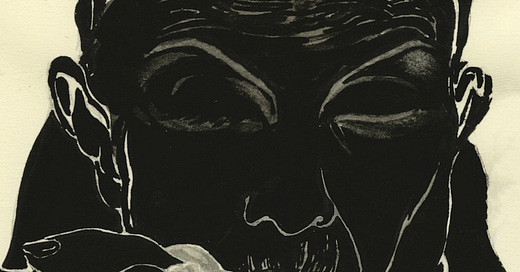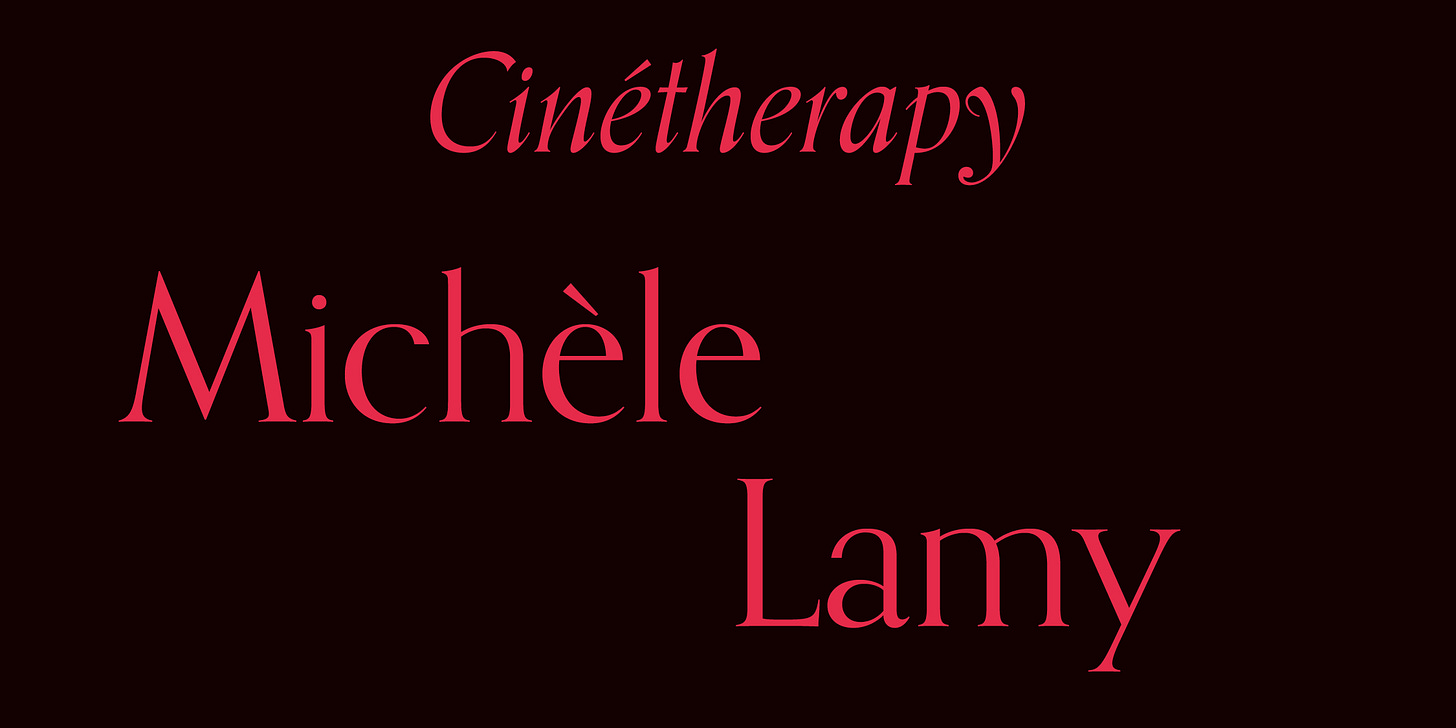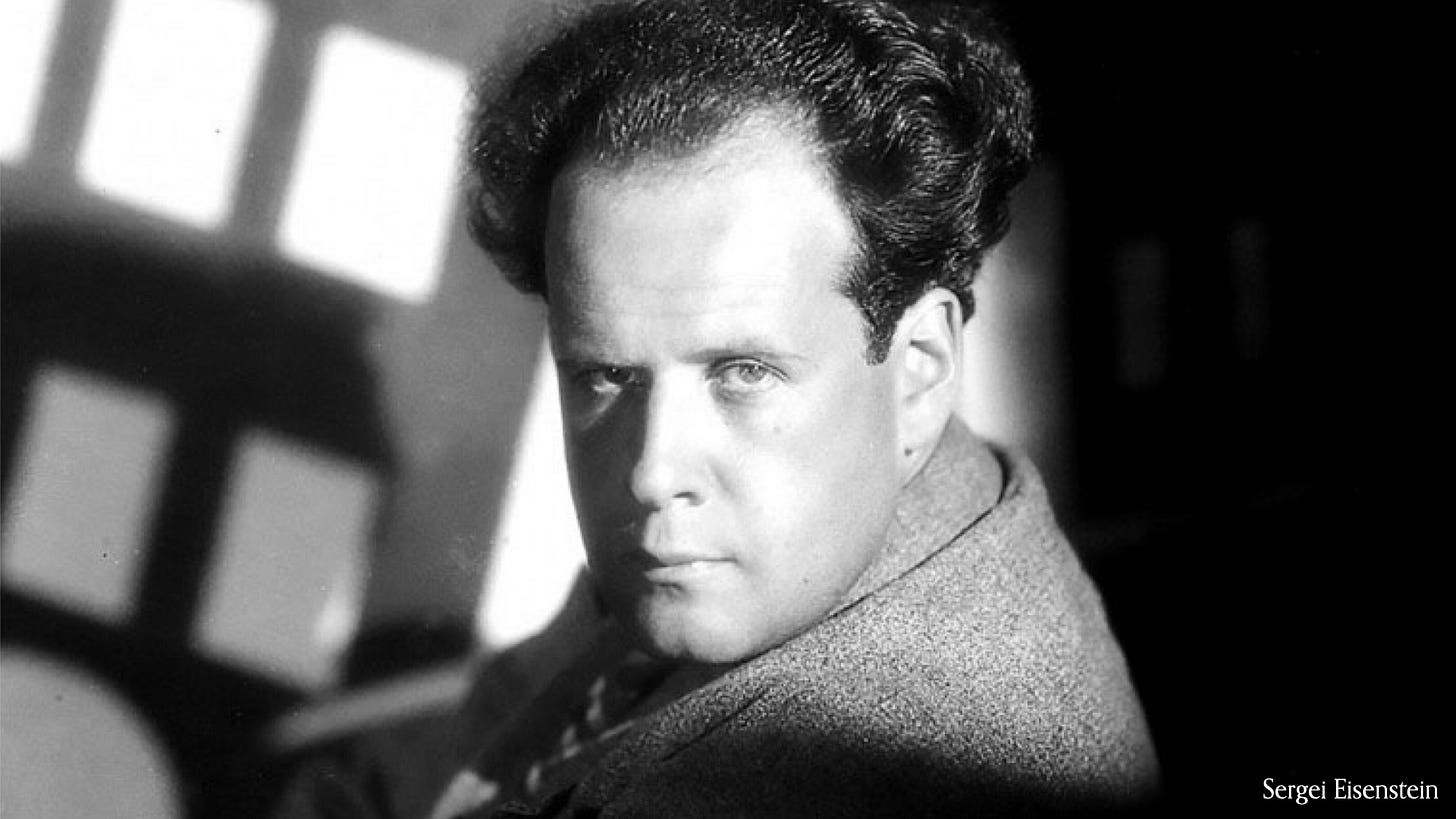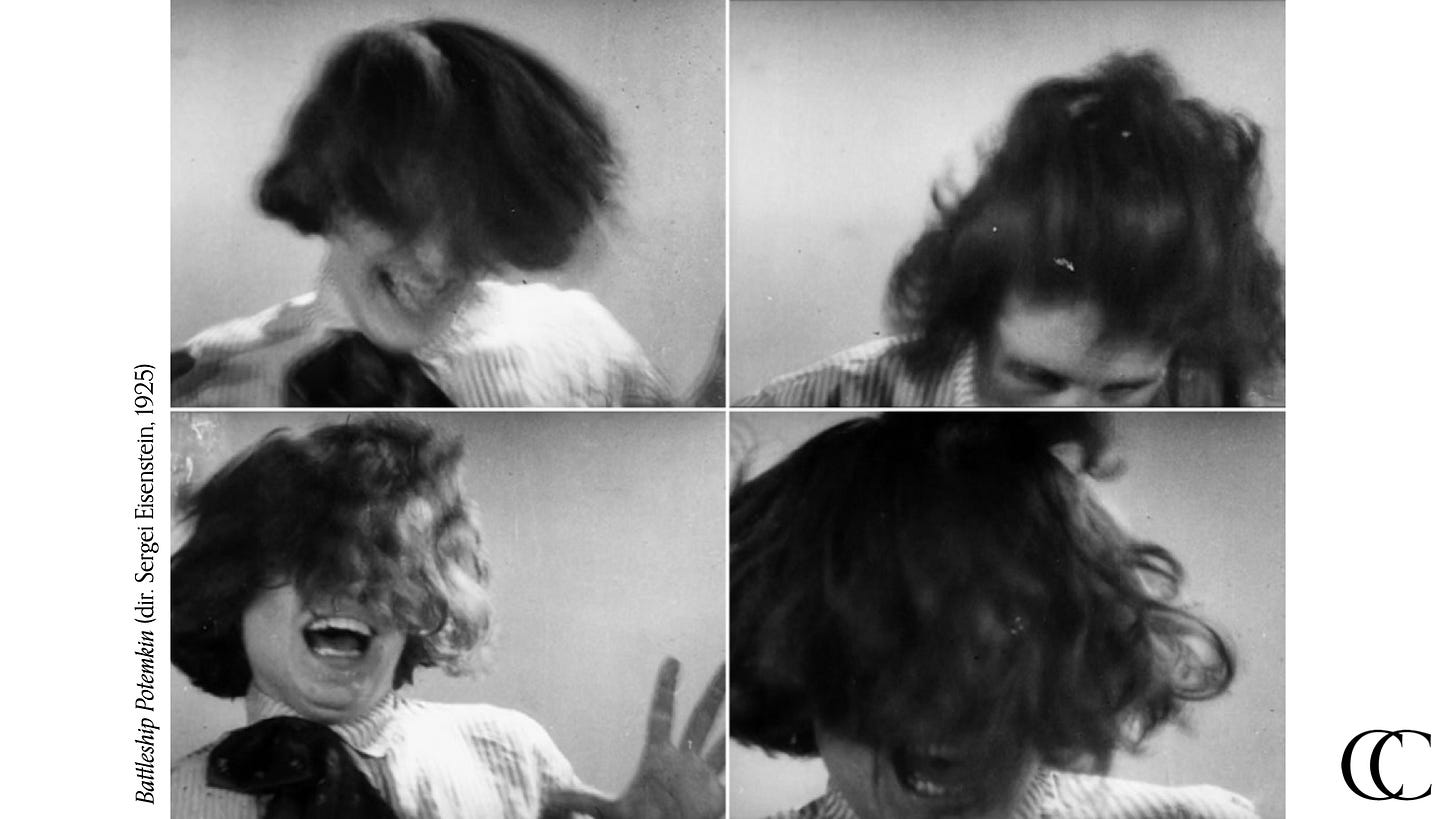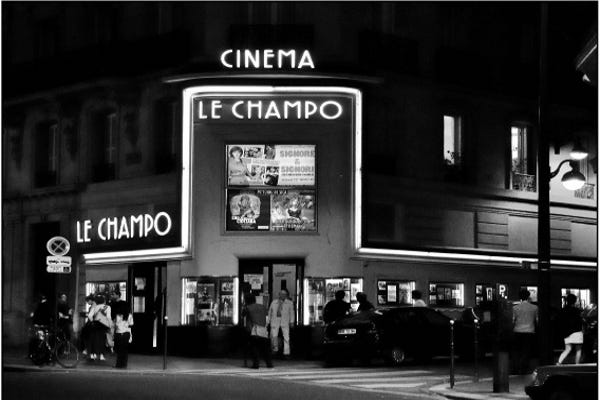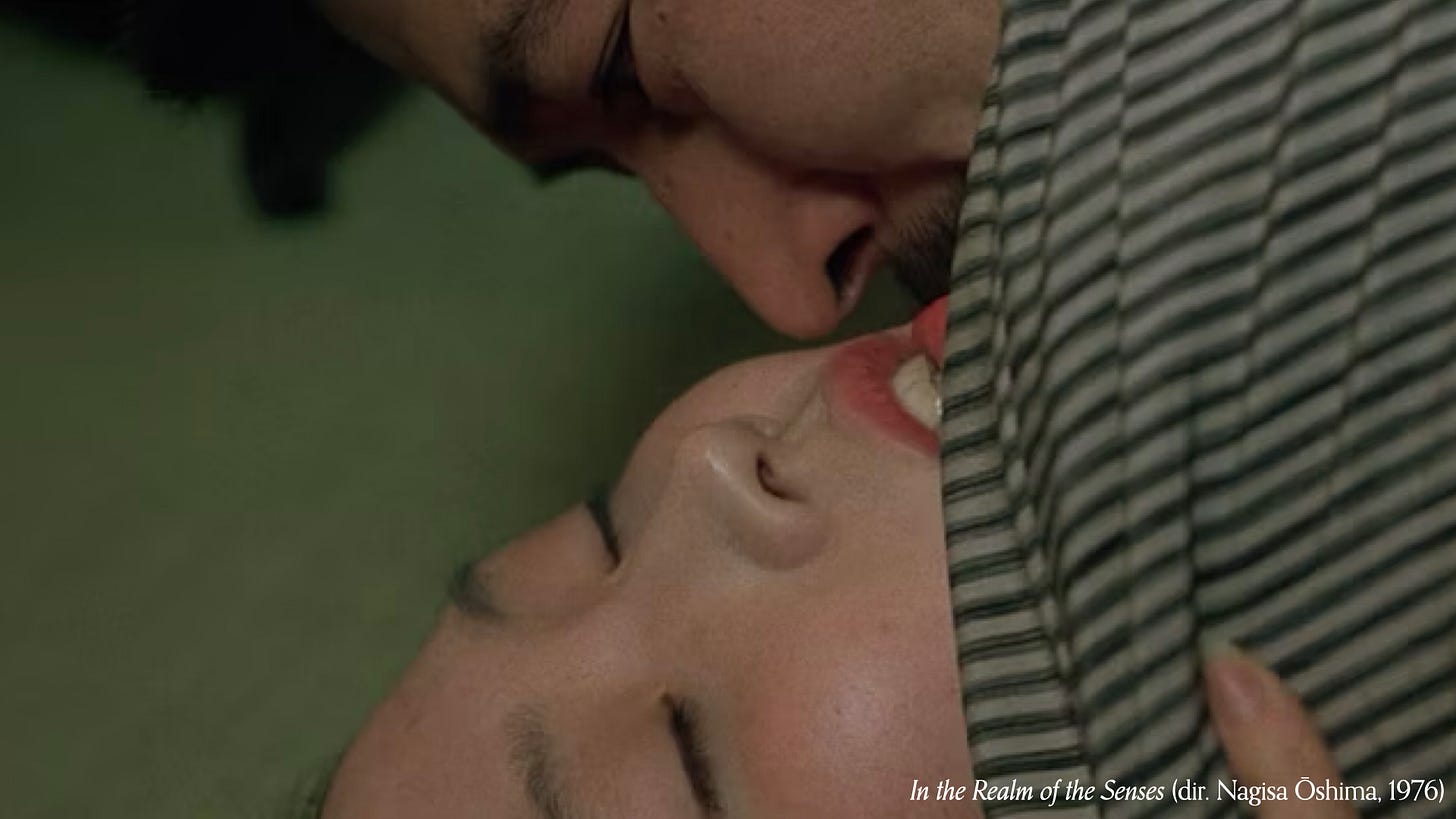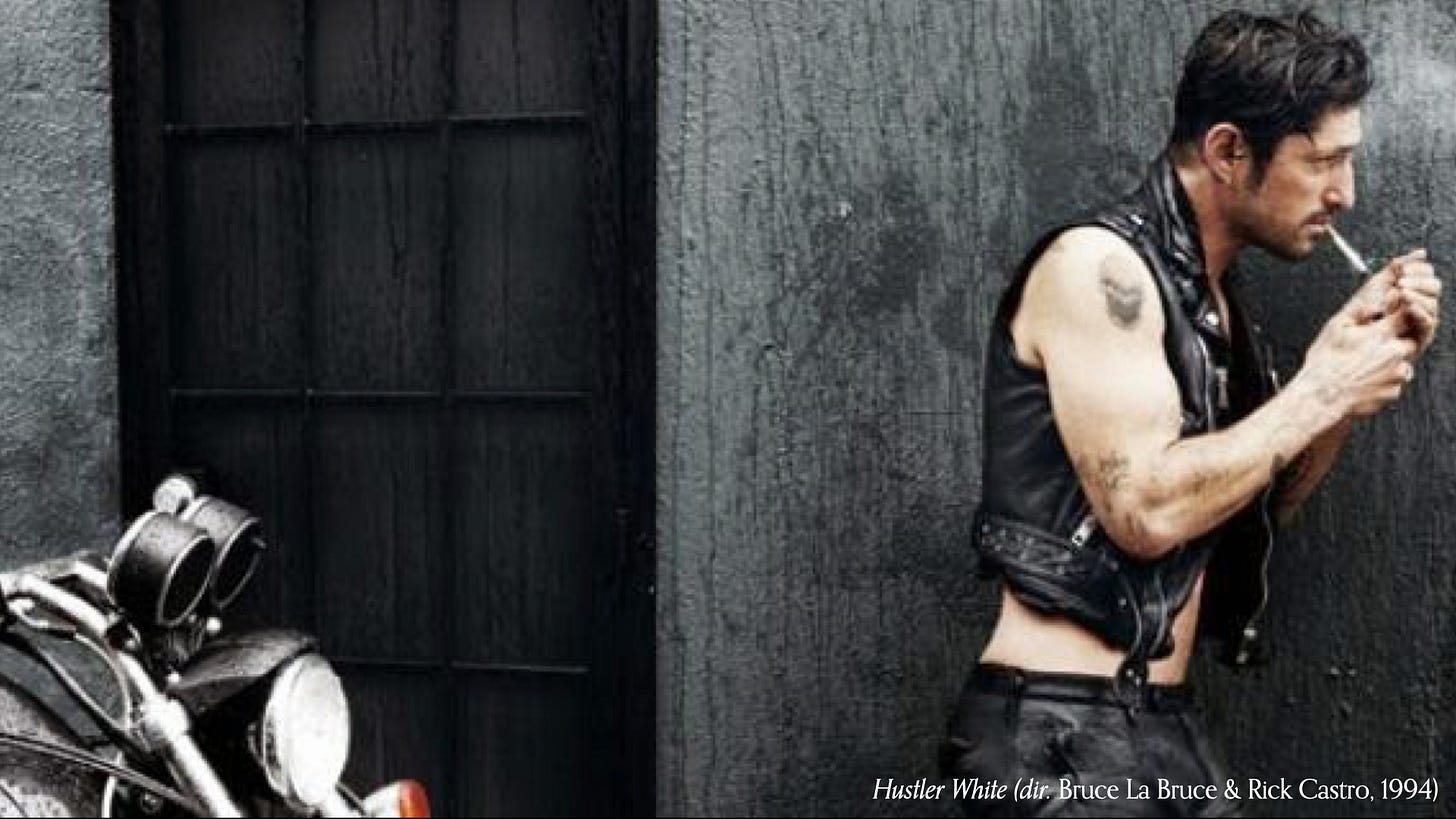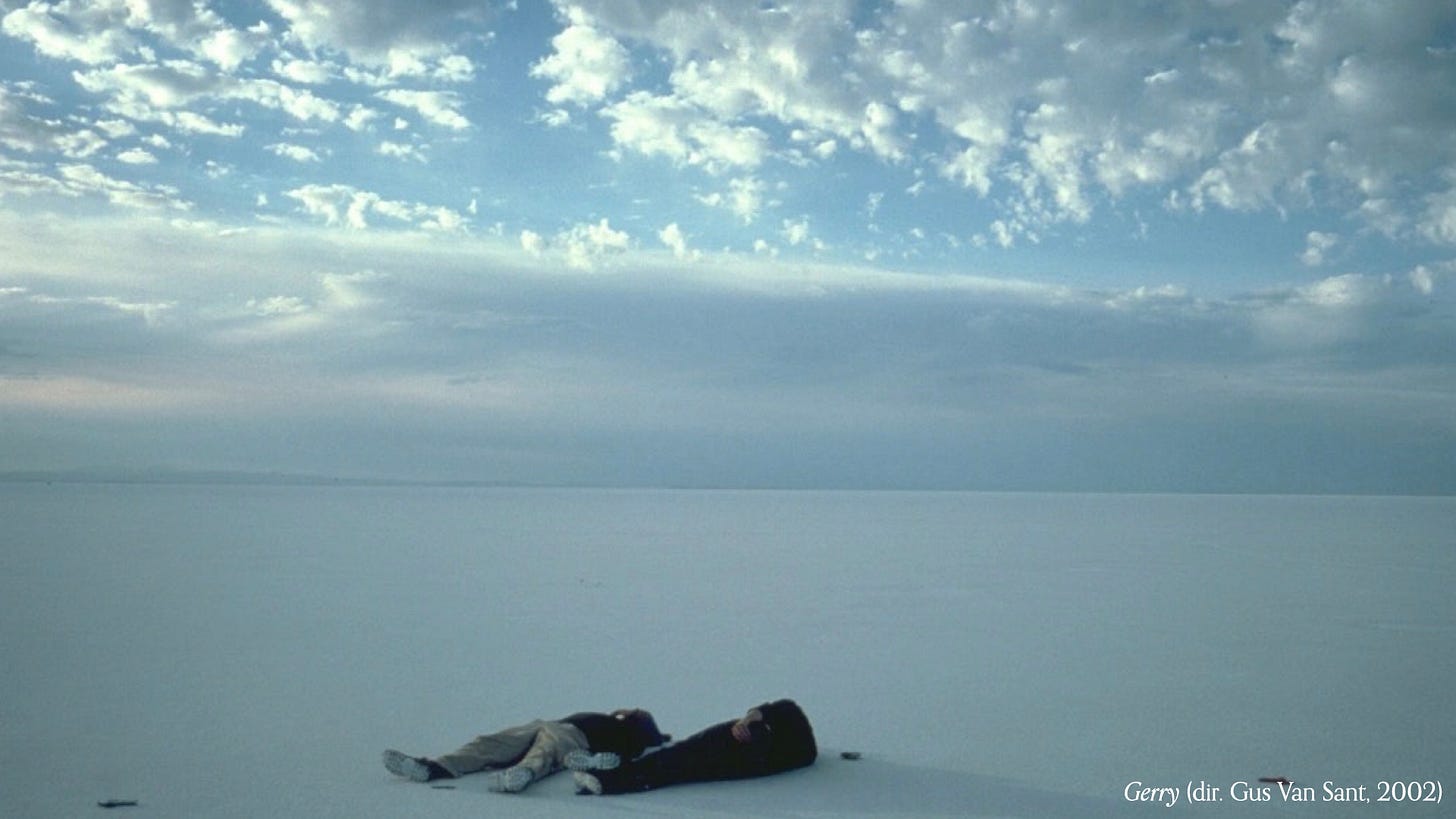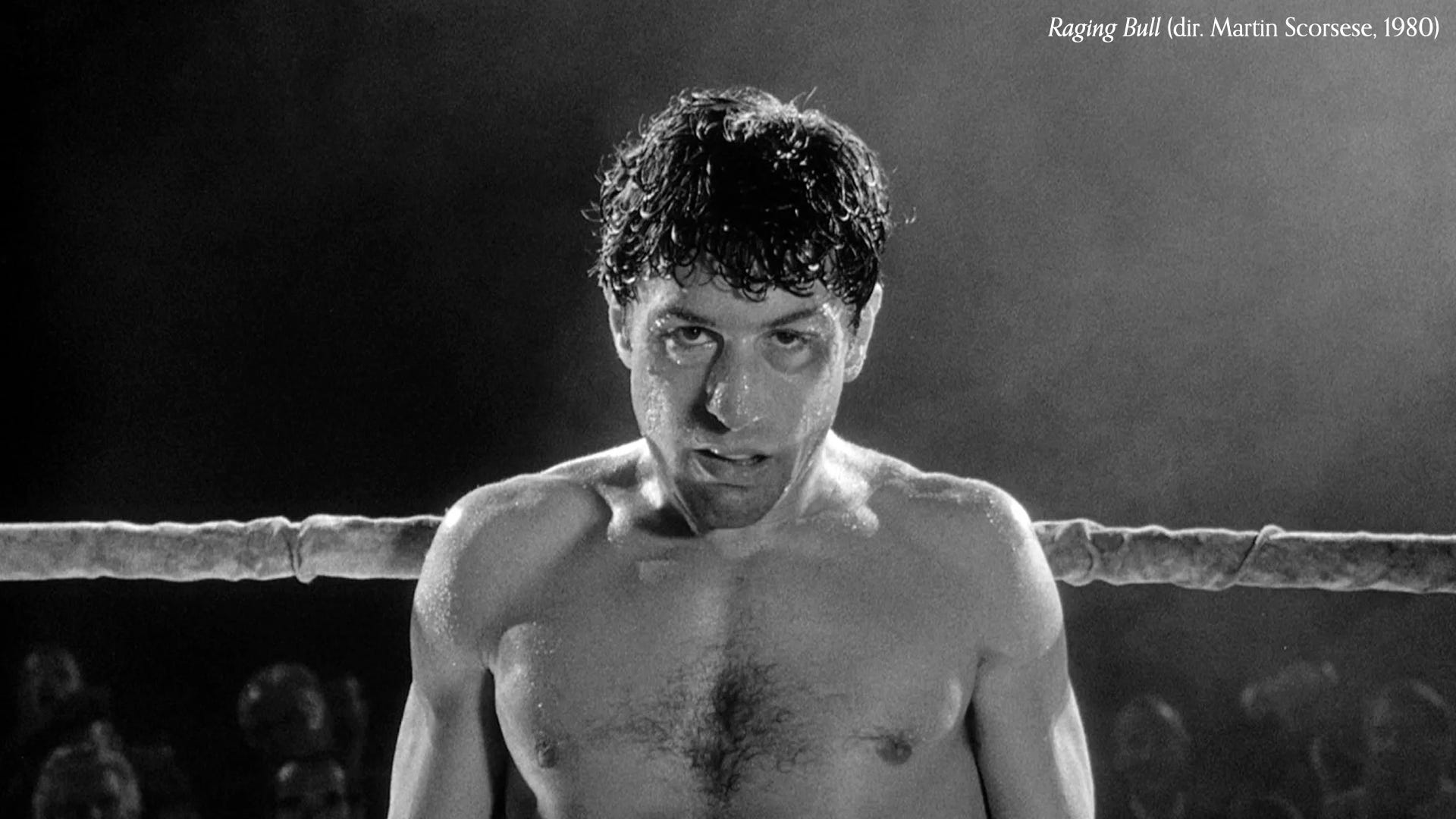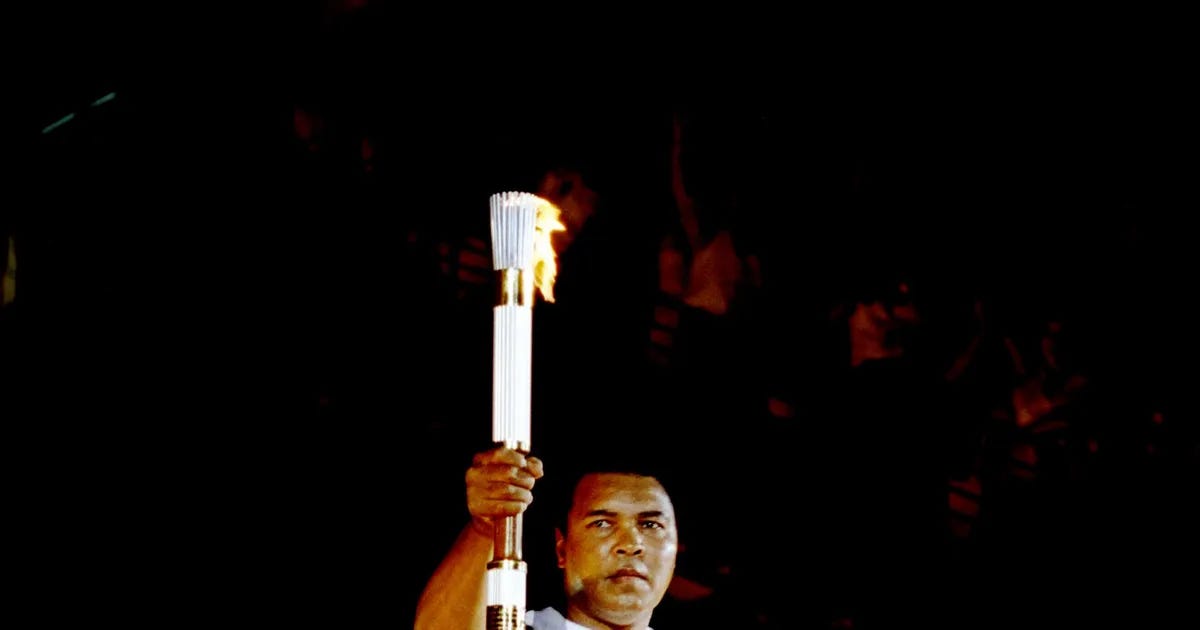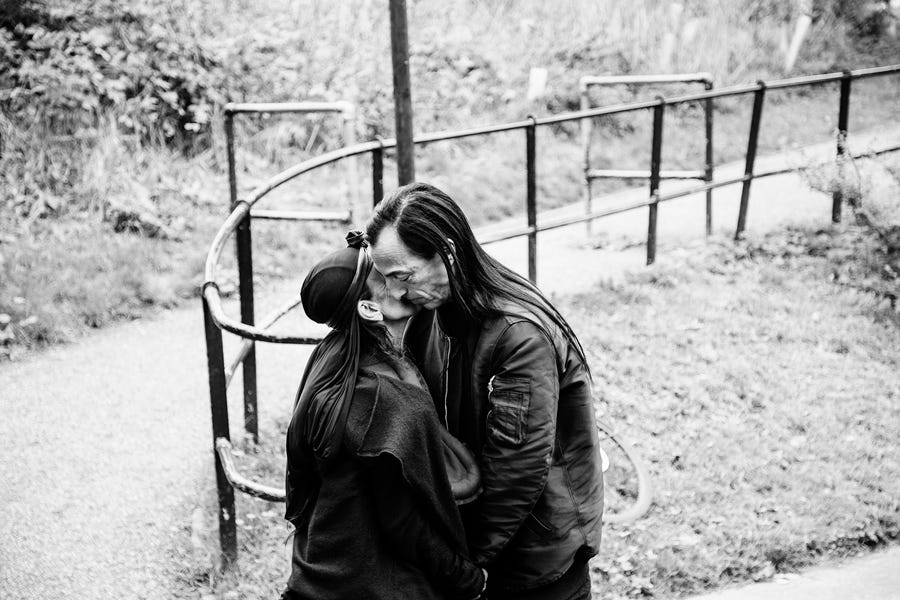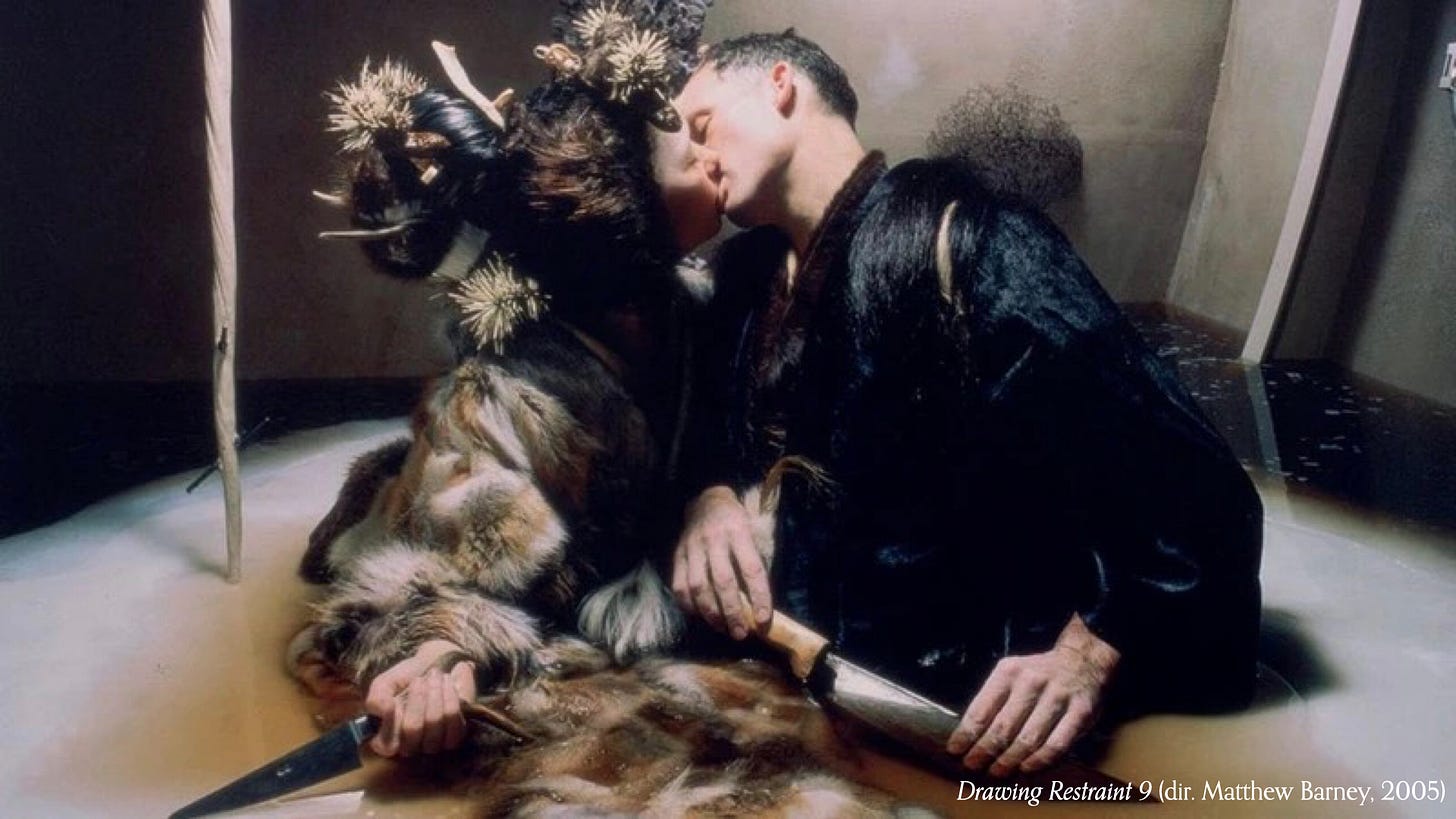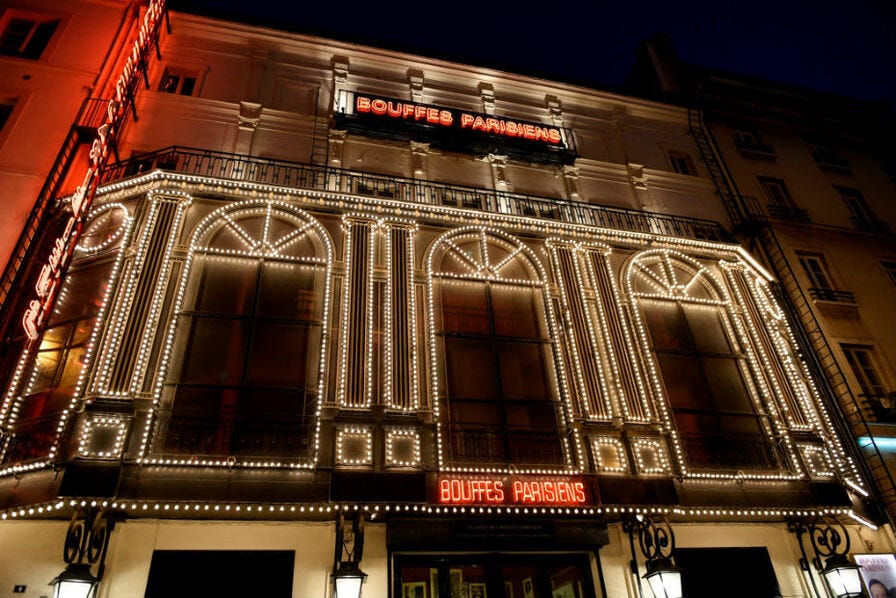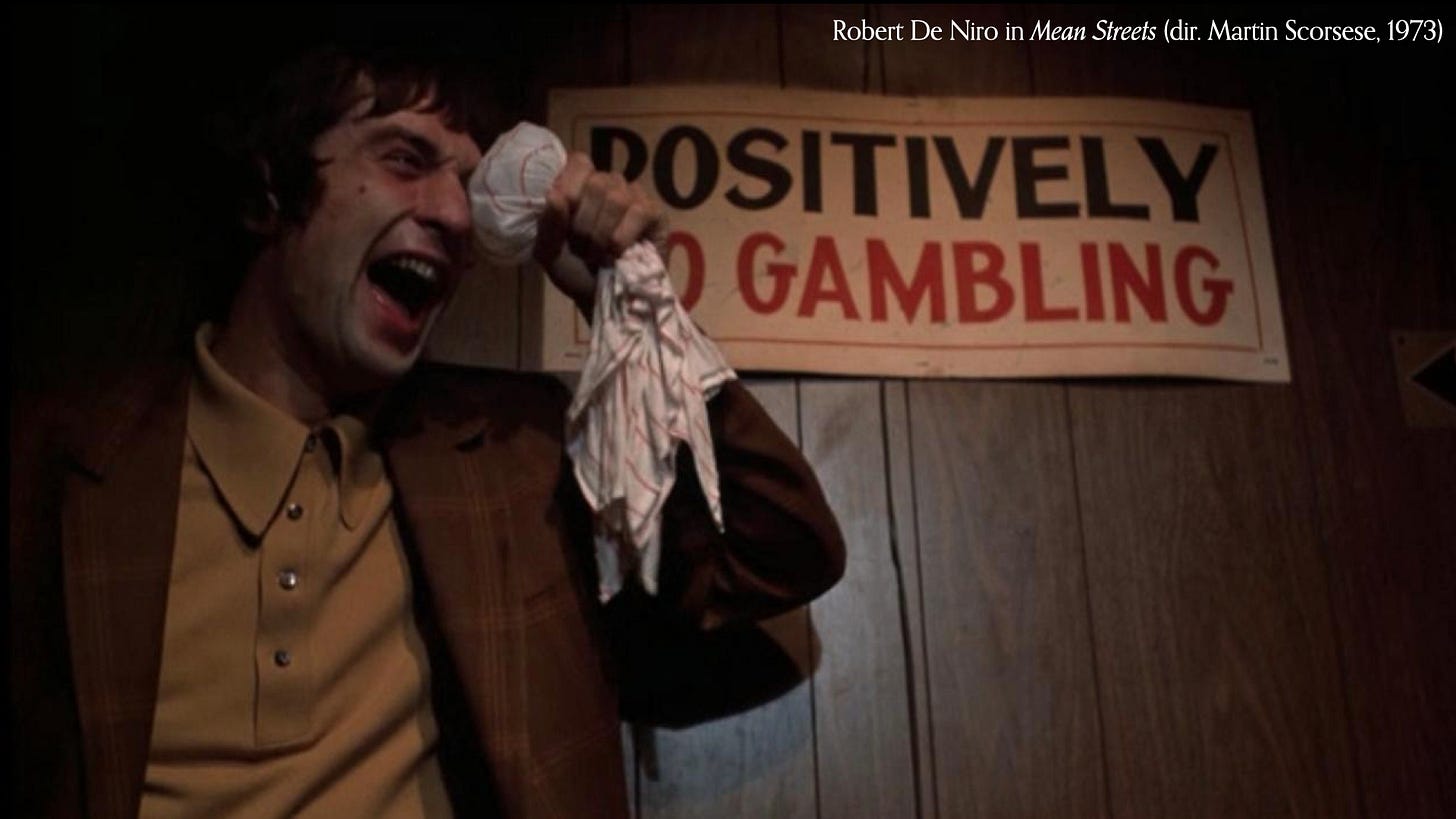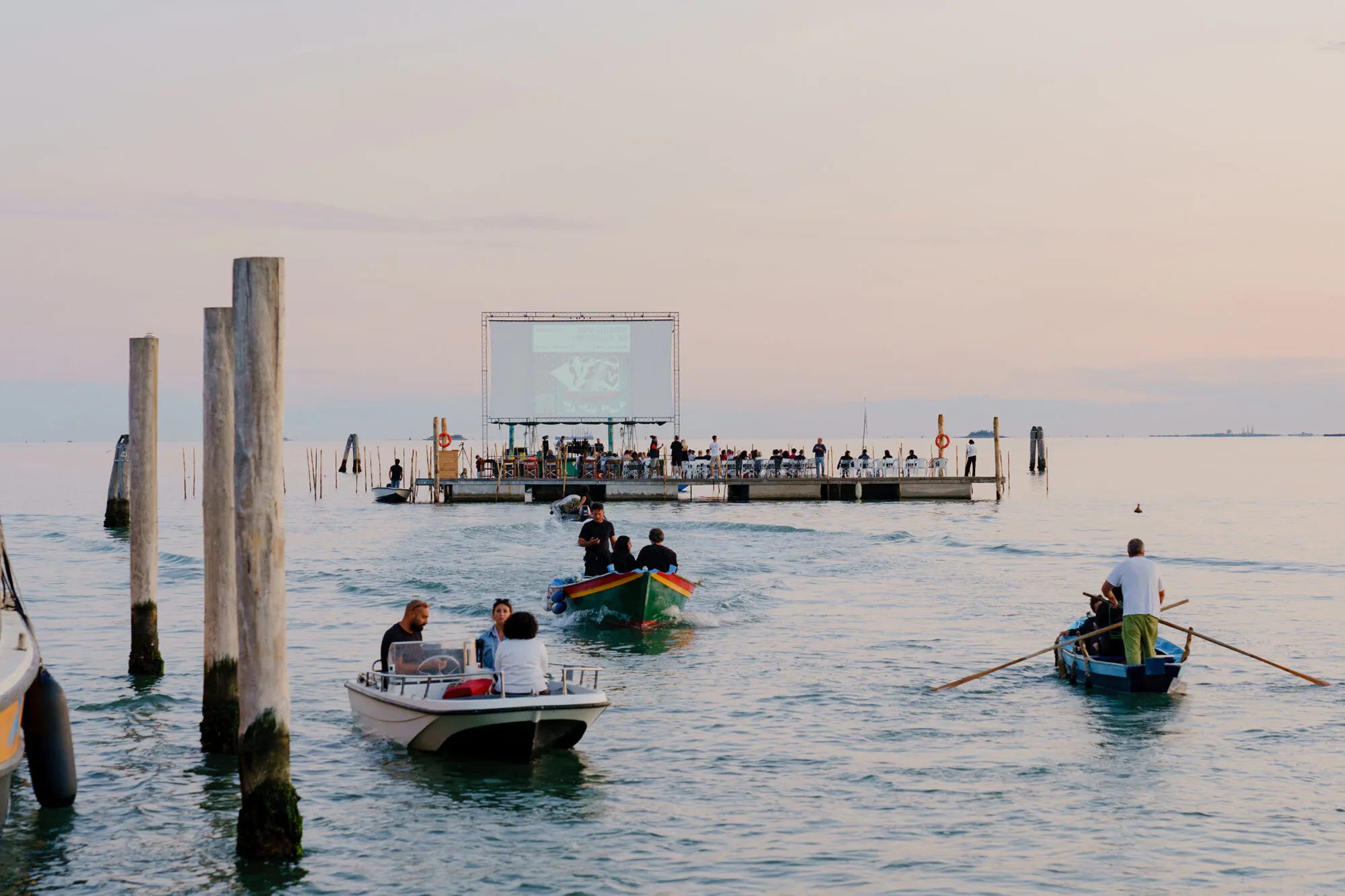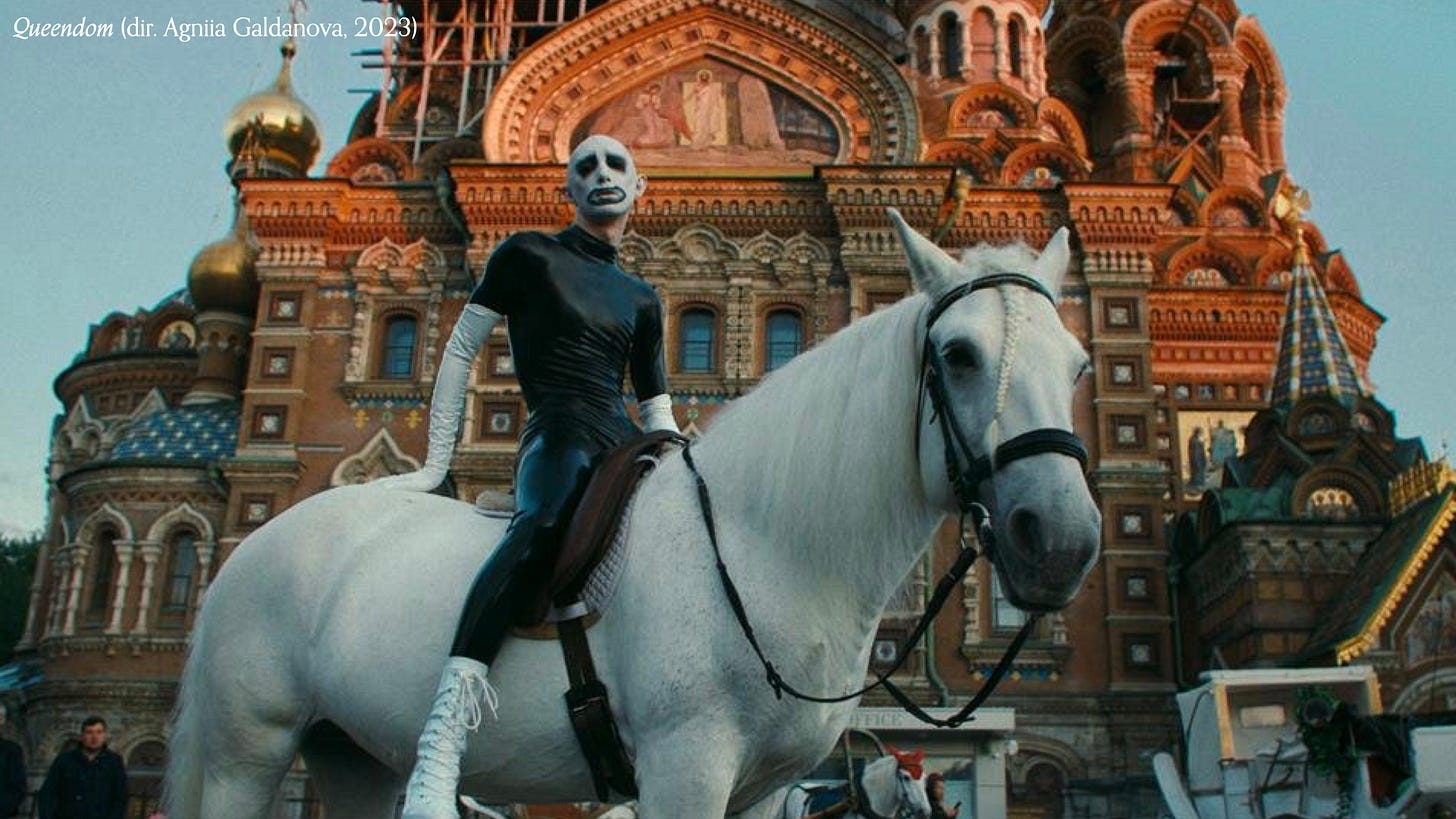Cinétherapy: Michèle Lamy
"Jean-Luc Godard changed everything for me. It wasn’t just cinema any more; it was a way to live, to move, to speak."
Michèle Lamy eludes simple categorization. An artist, entrepreneur, producer, collaborator, and performer who studied philosophy under post-structuralist Gilles Deleuze and worked as a defence lawyer before becoming life partner to Rick Owens, with whom she co-founded their empire, Owenscorp, and where she is also the Managing Director of Art and Furniture. In 2014, Lamy created 'LAMYLAND,' an umbrella term for her independent creative endeavors, bringing together all the essential elements integral to her practice – experimentation, collaboration, storytelling, and creation. This has been infused with her love of boxing, collaborating with New York’s underground boxing club Overthrow to a boxing installation at the Venice Biennale. A major Rick Owens career retrospective will open at the Palais Galliera in Paris on June 28.
Rick sometimes watches movies in the shower, but when we’re together, we like to watch a movie at night, in bed, usually starting by 11.30pm
Interview by Tom Macklin
What's your earliest film memory?
From the age of nine to 15, I was at a boarding school run by nuns and there was a ciné club, which was the chic place to be, and we saw incredible movies. I'm so grateful because we saw all the black-and-white Sergei Eisenstein movies. The person running the ciné club was programming independent films, and that was amazing. I saw movies there that I don’t think exist anymore and which marked me forever. My grandmother lived in in a little town in Jura [in France], and if she wasn’t away in Geneva or somewhere, then on a Sunday she had her regular seat at the movie theatre, and in those days, you didn’t know what you were going to see, you’d always go at the same time. She’d have been watching black-and-white movies from the 1930s – always the same time, the same place, the same seats.
The art and cinema of the late 1950s and 1960s is much loved today, but, as a young woman, did you enjoy it at the time?
Oh, I mean, this is when it all happened. The thing that changed everything for me is May 68 [the student demonstrations in Paris that lead to national civil unrest], but before that, it was Jean-Luc Godard, and then also everything he did until he died. Back then, I was all about performance, I was all about Godard, I loved [the artist and poet] Jean-Jacques Lebel who was doing radical performances. And in Avignon [in 1968] there was The Living Theater – it wasn't theater as we knew it. But when you ask about film, it was Godard. At the time, at around 20 years old, I was training as a criminal attorney, and we were going three times a day to the movie theatre. This was an exciting time. There was Breathless (dir. Jean-Luc Godard, 1960), Pierrot le Fou (Jean-Luc Godard, 1965) and the whole Nouvelle Vague. That changed everything. It wasn’t just cinema any more; it was a way to live, to move, to speak. There were many times that we had to go to class, but no: we are going to the cinema. If I have to say only one thing about the movies, it must be Godard.
What was your local cinema?
Le Champo, in Paris – that was where the movies were. That’s where we saw this Japanese movie that was forbidden, In the Realm of the Senses (dir. Nagisa Ōshima, 1976). But I can’t single one film out, because there were so many.
I was so happy that Sofia Coppola decided to do the opening of The Virgin Suicides (1999) at Les Deux Cafes. There were not so many women high up in film then. A lot of women were pushing to make things happen, certainly, as usual, but happily this is changing now.
Why did you go from Paris to Hollywood?
I left because I was so disappointed after May 68. For me, it was all about performance and that led me to Warhol in New York, then LA. I was going back and forth from New York to LA, and then I thought, I need to be there permanently. My brother told me, you don't have enough money to do whatever you want to do in New York, so you should try LA. I never went for movies. There were so many creative people in LA, incredible people with imagination telling stories. I do admire people who create those stories and so I opened the café (legendary 90s restaurant and nightspot Les Deux Cafes) where all those people could mingle. I was very interested to be, you know, even more in this behind the stories, because there you find the most incredible people. Rick Castro was the first person I met when I went to LA, when he was a stylist and designer [before becoming a photographer]. He was 18, and finding subjects for [the transgressive photographer] Joel-Peter Witkin, like the [conjoined twins] joined at the head. Later, Rick did a movie with Bruce La Bruce (Hustler White, 1994).
Did your relationship to Hollywood movies change when you lived there?
I was more into the people, so when I started Les Deux Cafes, the filmmakers Philip Noyce, Mike Figgis and Jan Sharp, and Julian Sands were regulars. I had this mix of directors and actors. I had a photographic exhibition of work by the cinematographer Christopher Doyle, who was somebody so important to me, and I knew his frequent collaborator Gus Van Sant, who came for dinner a lot. I remember one late night at Les Deux, I was talking to Gus and asking him about the clouds that were in his movies… he always had great images of clouds in the sky.
When I was in LA, we had people invite us to screenings in the middle of the afternoon, or in the morning, and we’d go to those, but the evening? No, we’re going to the club.
Did Les Deux Cafes take on a life of its own?
Opening it felt like creating a new kind of stage. It was a performance space in itself. Everything about it – the people, the energy – was like living inside a film. There was a sense of freedom, of constant creativity. It was like my theatre and it's true that I had everyone there, and it was by the Hollywood Hills, in a dangerous place for the time, there were a lot of drug addicts, but that made it exciting. The industry clientele would come to our place to party, to do dinner, and they were doing deals at the same time, not just talking about the fromage, you know. You could see the drama unfold sometimes. A very famous actor would have one of his girlfriends for a drink, and then head across the street, where he was having drinks with another one! I remember that The Blair Witch Project (dir. Daniel Myrick, Eduardo Sánchez, 1999) was making everybody crazy there when it was released, that was a big event. I was so happy that Sofia Coppola decided to do the opening of The Virgin Suicides (1999) at Les Deux Cafes. There were not so many women high up in film then. A lot of women were pushing to make things happen, certainly, as usual, but happily this is changing now. We were just by the Egyptian Theatre that had just been restored by American Cinematheque; Agnès Varda did the reopening and we had a party for that. Our clientele was a mix; we had a lot of boxers there also. The 90s were a fantastic time for movies and art – Julian Schnabel, who made Basquiat (1996) (At Eternity’s Gate, 2018) and Peter Greenway were there. It was the world of movies, but to me, it was an art and movie city – the 1990s were a fantastic time for both. It's why I think it worked so well. We also had Eric Garcetti coming in before he was mayor. Paul Thomas Anderson. Joni Mitchell was there all the time. Sharon Stone sang her poems at Les Deux. I was swimming in stories, a lot of them about the art world.
How did you discover boxing – a red thread in your life and career – in LA?
I was always going to the gym, Gold’s, which was sort of boring, and then I discovered the Wild Card boxing club. I remember everyone looking at me in a weird way for a while. For me, boxing is about coordination, looking people in the eyes, and I was fascinated by that romantic view of fighting. I met Lucia Rijker, who was training at Wild Card. She had beaten all the female boxers of the time and wanted to fight men. And then Katya Bankowsky showed me her movie (Shadow Boxers, 1999, a documentary about Rijker) and since then, we have collaborated a lot. Katya is very important to me.
What is your favourite boxing film?
Raging Bull (dir. Martin Scorsese, 1980)
Who's your favourite boxer of all time?
Muhammad Ali. I mean, he is my hero. At the time of the Olympics in Atlanta [1996], I put three very old TVs in Les Deux Cafes, and we showed the opening event, without sound. Then I see everybody out in the garden and everybody in the restaurant standing up. It was Muhammad Ali with the flame walking through the stadium. When I watched the Ali documentary When We Were Kings (dir. Leon Gast, 1996), you feel the experience… I mean: it's beyond. That's what it is. That's a great documentary. I love documentaries.
The art is so strong for me in Drawing Restraint 9 (dir. Matthew Barney, 2005), one of the strongest pieces of art ever, for me, and it could not be done except in a movie.
Did you and your husband go to the movies in LA?
I asked Rick Castro to design a men’s line with me, called Lamy Men. He said, “I can come with you, but I don't know how to make patterns, but I know a fabulous pattern maker, Rick Owens.” So that is the way we met. We have a show at Palais Galliera [in Paris] at the end of June, a retrospective, and it reminded me that when we started going out together, we never had movie date nights, I was taking him to art openings. Date movies are now at home. The last movie we watched was Queer (dir. Luca Guadagnino, 2024). I love to look at Daniel Craig. We watch a lot of movies at home, in LA and in Paris, on huge screens. I don't like popcorn, it's not good for us. I don't like the smell of popcorn. When I was in LA, we had people invite us to screenings in the middle of the afternoon, or in the morning, and we’d go to those, but the evening? No, we’re going to the club. We’d watch the movies later, like in bed or something.
How do you watch movies at home now?
Rick sometimes watches movies in the shower, but when we’re together, we like to watch a movie at night, in bed, usually starting by 11.30pm, because we don't go to the cinema anymore.
What's one thing in a film that lights a fire in you?
Drawing Restraint 9 (2005), the Matthew Barney movie with Bjork, there’s a scene when they cut each other and there’s no blood; it’s like whale blubber. This is something I can never get out of my head. I think it is the most sensual thing I have ever seen, that somebody could show intimacy and such strong feelings in a way you would never have imagined. The art is so strong for me, one of the strongest pieces of art ever, for me, and it could not be done except in a movie.
Do you have anything film-related in your home, like a film poster?
I will never put a poster on the wall.
What’s your favourite-ever cinema?
Le Bouffes-Parisiens [a Paris theatre that has never been a cinema] would be the best place to see a movie. I’m no longer a teenager, so I like screening films at home, so you can have a drink, a cigarette and watch a movie with a few people.
Which era of cinema do you love the most?
The Godard era. I thought the 90s were super-interesting; nowadays less so. We were very happy in the 90s, were we not? All the movies I loved and people I was discovering, like Larry Clark. Anyway, it's difficult because we see so many things that we love on one side, on the other, there are awful humanitarian things happening, and we don't know how to save the world. So we have a very difficult time, we have to remember which world we are in and see what we can do to help.
What film character’s sartorial style are you obsessed with?
Robert De Niro in Mean Streets (dir. Martin Scorsese, 1973). There’s a fabulous attraction and seduction about him, and it's always great when there is danger to it. You know, in LA I learned how important actors are, and how difficult it is to be an actor, because they have to make the magic for you to believe in.
What have you watched on TV?
Lately, we have been watching Bella Freud’s new podcast interview series Fashion Neurosis. She's fantastic, she's a friend. We used to watch David Letterman, but we stopped, probably because the guests are not so interesting. We watched Louis CK before he got cancelled. I don’t know when he’s coming back, but we like him.
What is your involvement with the ‘floating cinema’ in Venice?
It's called Cinema Galleggiante and it’s our little Hollywood in the summer. A big screen floating on the lagoon and people watch from fishing boats. We help choose the movies, with Paolo Rosso, and I've done some performances there.
Which film have you watched the most times?
I don't know. Rick will often put on old silent movies, so I will have seen some of those more than once. But there is always something new happening that you want to see. Perhaps I’ve watched movies more than once with the grandchildren, when they want to watch things again.
What film best reflects your sense of humour?
Black Cat, White Cat (dir. Emir Kusturica, 1998). It’s from Serbia, and about the world of the Romani. This is something that I would like to watch again.
What’s your guilty pleasure?
I wish I had some incredible porn thing, but my porn is not guilty to me. But otherwise, something French with Bourvil, because he was so ugly and had that unusual voice.It's a pleasure to watch one of those terrible, or perhaps so not terrible, Bourvil movies.
What have you enjoyed watching recently?
Queendom (dir. Agniia Galdanova, 2023). It’s about an artist who escapes from Russia, and is in the documentary, it’s beyond, you have to see it. I’m also doing a movie with Agniia, The World We Change. We’ve already shot some of it, in Jordan, at the border of Palestine. The title comes from a sentence in Arabic that we translated, ‘Be the change, if you want the world to change around you”. We try to do whatever we can.
Has anyone ever approached you about telling your story on screen?
All the time. Agniia is one of them. The one I like the most who approached me, that I have loved forever, is James Crump, who made those art documentary movies [such as Antonio Lopez 1970: Sex Fashion & Disco, 2017] with [producer] Ronnie Sasoon. I love what he does, and he asked me to do something, and we’re thinking about. There’s also Reiner Holzemer, who did the new Thom Browne documentary [Thom Browne: The Man Who Tailors Dreams, 2024]. He’s done films about Juergen Teller and Margiela, he is a great documentarian. I don't know how to tell longer stories, but I would like to make a couple of performances that will be like movies.
What’s next for you?
Collaborating with Agniia Galdanova. It can be difficult with us, because I'm all about the music. I’ve worked with Travis Scott and A$AP Rocky, but she has this strength and an eye and the fight – it's why we started working together.
Rick Owens, Temple of Love, from 28.06.2025 to 04.01.2026
Palais Galliera, Paris
More information here.
WATCH
Cinétherapy -
The Films That Shaped Michèle Lamy
Breathless (dir. Jean-Luc Godard, 1960),
Pierrot le Fou (Jean-Luc Godard, 1965)
In the Realm of the Senses (dir. Nagisa Ōshima, 1976)
Hustler White (dir. Bruce La Bruce & Rick Castro, 1994)
The Blair Witch Project (dir. Daniel Myrick, Eduardo Sánchez, 1999)
The Virgin Suicides (dir. Sofia Coppola, 1999)
Gerry (dir. Gus Van Sant, 2002)
Shadow Boxers (dir. Katya Bankowsky, 1999)
Raging Bull (dir. Martin Scorsese, 1980)
When We Were Kings (dir. Leon Gast, 1996)
Queer (dir. Luca Guadagnino, 2024)
Drawing Restraint 9 (dir. Matthew Barney, 2005)
Mean Streets (dir. Martin Scorsese, 1973)
Black Cat, White Cat (dir. Emir Kusturica, 1998)
Queendom (dir. Agniia Galdanova, 2023)
FURTHER READING
Cinema Galleggiante - information and tickets
Bella Freud, Fashion Neurosis - listen on Spotify
W Magazine - Queendom Documents Queer Life in Russia Through an Artist’s Eyes
Los Angeles Times - Les Deux Cafes’Inside Story (April, 1998)
Mubi - THOM BROWNE: THE MAN WHO TAILORS DREAMS
Creative Review - Director Gus Van Sant on finding stories in unexpected places
A Rabbits Foot - Love and Tragedy In The Realm of The Senses


